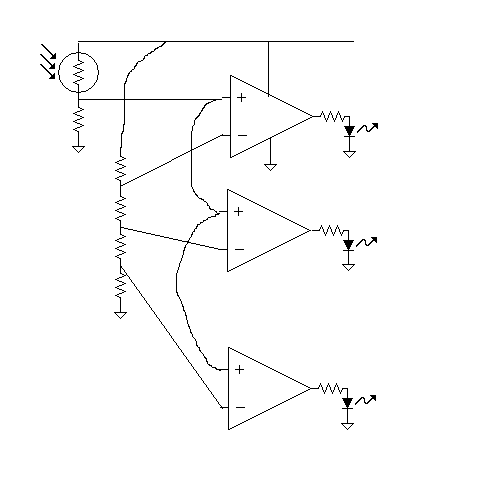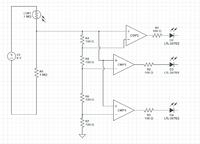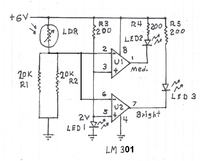haitham al-saab
Junior Member level 1
Hello every body
I'm still beginner in designing a circuits I decide to make a light sensor with three leds , If the light R very bright the 3 led will start work if it is less brightness 2 will work and if there is no light just one will work
I know I have to use comparators but the problem I don't have a complete idea or a program to simulate plz help me
thx a lot
I'm still beginner in designing a circuits I decide to make a light sensor with three leds , If the light R very bright the 3 led will start work if it is less brightness 2 will work and if there is no light just one will work
I know I have to use comparators but the problem I don't have a complete idea or a program to simulate plz help me
thx a lot


